Text
Espresso roast vs filter roast – what's the difference?
In coffee, the journey from bean to cup is a sensory experience. For those stepping into specialty coffee, understanding the nuances between filter roast and espresso coffee is key to discovering your preferences. As coffee culture flourishes in the Philippines, Everyday Coffee Roasters has emerged as the leading e-commerce platform, offering freshly roasted coffee that can be enjoyed anytime and anywhere.

What is Filter Roast Coffee?
Filter coffee is known for its delicate and nuanced flavors. Prepared using methods like pour-over or drip brewing, it highlights the bean's natural complexity, often showcasing fruity, floral, or tea-like notes. Filter roast beans are typically lighter and designed for slow brewing that extracts these subtleties.
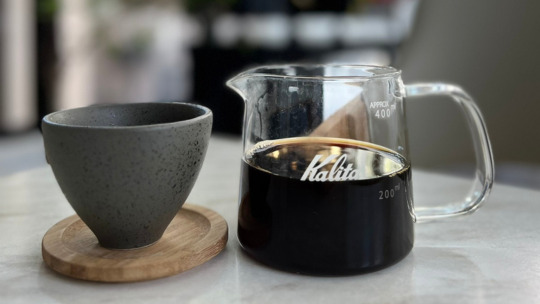
What is Espresso Coffee?
Espresso coffee is bold and concentrated, brewed under high pressure in 25-30 seconds. Its roast profile is usually darker, delivering robust and intense flavors that form the foundation of lattes, cappuccinos, and other espresso-based drinks.
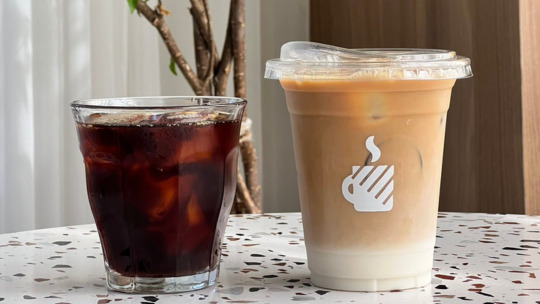
Key Differences Between Filter and Espresso Coffee
Roast Profile: Filter roasts are lighter, while espresso roasts are darker.
Brewing Method: Filter uses slow extraction; espresso relies on high-pressure brewing.
Flavor Profiles: Filter coffee is subtle and complex; espresso is rich and bold.
Caffeine Content: While espresso may seem more substantial, filter coffee often has more caffeine per serving due to larger cup sizes.

Which One Should You Choose?
Your choice depends on your lifestyle and taste. Filter coffee suits those who enjoy slow mornings and intricate flavors, while espresso appeals to individuals seeking a bold, quick pick-me-up.
Everyday Coffee Roasters makes this decision easier by offering curated selections for both, ensuring that your coffee experience matches your sophisticated palate.

The world of specialty coffee offers a spectrum of flavors and experiences, from the delicate intricacies of filter coffee to the bold richness of espresso. With Everyday Coffee Roasters, you’re not just buying coffee—you’re beginning a journey into a refined taste and convenience lifestyle. Start your exploration today, and discover what makes each cup extraordinary.
0 notes
Text
Hacienda La Esmeralda - Jaramillo
The Jaramillo mountain air is wet and cold, perfect for making the aromatics of the Geisha variety sing. Though Geisha variety coffees had been planted sporadically across the area, a lot separated out from a tiny region on this farm led to the rediscovery of Geisha. The farm rises from rolling hills on its lower part to steep 40-degree inclines higher up, making harvesting a manual and challenging affair. Coffee had been planted on the lower parts of the farm—as many as 15 different sub-varieties, hybrids out of Costa Rica and Brazil—and in 1997, the Peterson family decided to plant higher up.
At these high altitudes, the Geisha's bright, floral aromatics express themselves. With cooler temperatures and massive shade trees that have been standing for ages, Jaramillo is the perfect place for this variety to grow. To this day, many of Hacienda La Esmeralda's top-performing micro lots of Geisha coffee come from little patches on the slopes of Jaramillo.

0 notes
Text
Café Granja La Esperanza

Beginning in 1930, Israel Correa and Carmen Rosa Vega arrived in Valle del Cauca seeking unoccupied land to start a farm, acquiring Potosi. Over the upcoming years, their way of life remained unchanged, centered around their farm and their growing family, a tradition deeply rooted in Colombian culture. Faced with a lack of labor, the children stepped up to help, becoming an integral part of the farm's operations. In 1945, the family introduced three new varieties to their existing Typica: Yellow Bourbon, Red Bourbon, and Caturra, a testament to their unity and shared commitment to the farm.
Two of the eleven children, Rigoberto and Luis, showed particular interest in coffee production and processing. They decided to give their crop a new direction, changing to organic farming in the late 90's. This transition was not without its challenges, but it brought significant benefits, including improved soil health and a more sustainable farming model. Besides Potosí, another farm in the Trujillo region was acquired to enlarge the organic production, La Esperanza farm. In 2007 Don Rigoberto had the chance to lease and manage a coffee farm in the area of Boquete in Panama called "La Carleida," and a year later obtained first place in the "Best Coffee of Panama." At this point, he decided to bring some of the Geisha seeds to Colombia, starting a new era in the history of Granja La Esperanza.
Five farms comprise the Café Granja La Esperanza: Cerro Azul, Las Margaritas, La Esperanza, Potosi, and Hawaii. With a reputation for producing competition-winning coffees, processes are matched with varieties to create unique flavor profiles.
0 notes
Text
Discover the Art of Sumatra Coffee: From Gayo Farmers to Your Cup
In the highlands of Sumatra, the ethnic Gayo farmers are the backbone of a rich coffee heritage. They primarily cultivate Gayo 1 and Gayo 2 varietals, which have intriguing and mysterious origins. Many believe Gayo 1 is a descendant of the Timor variety, while Gayo 2 shares similarities with both Timor and Bourbon. These varietals, grown throughout this renowned coffee region, produce a cup profile that's distinctively lighter-bodied compared to the famous Mandheling coffees from further east, making them a unique and intriguing choice for coffee enthusiasts.
Sumatran coffee has a rich and storied history, dating back to the 17th century when the Dutch East India Company first introduced coffee plants to Indonesia. The island of Sumatra, with its diverse tropical flora, fauna, and unique microclimates, provides an ideal environment for coffee cultivation. Sumatran coffee farms, typically small and scattered across remote areas, are part of a network of collectors, processors, traders, and exporters that bring this exquisite coffee to the global market, a testament to the enduring legacy of Sumatran coffee.
The Wet-Hulled Process: A Unique Indonesian Method The wet-hulled coffee process, or Giling Basah, which is locally known, is the hallmark of Indonesian coffee production. This method is particularly suited to Indonesia's humid climate and plays a crucial role in shaping the distinctive flavor profile of Indonesian coffees. Hand-cranked machines typically de-pulped coffee cherries at the farm during the wet-hulled process. The cherries then undergo overnight fermentation to break down the mucilage, which is washed off the next day. The coffee is dried to a 30-50% moisture content and later dried to 11-13% as it progresses through the supply chain to an exporter's mill. This meticulous process ensures the beans develop their unique character and quality.
Grading Sumatran Coffee: A Mark of Quality Sumatran green coffee undergoes a meticulous grading process, a mark of its quality. The grading is based on the defects in a 300-gram unroasted sample. The highest quality, Grade 1 TP (Triple Picked), indicates the coffee has been hand-sorted three times, resulting in fewer than five defects per sample. Grade 1 DP (Double Picked) allows for fewer than nine defects, while a general Grade 1 signifies fewer than eleven defects. The grading system ranges from grades 1 to 6, with Grade 1 coffees being the highest quality, ensuring that every cup of Sumatran coffee is a mark of excellence.
Regions of Excellence: Indonesian Green Coffee Beans Indonesia's vital coffee-growing regions include Aceh, North Sumatra, South Sulawesi, West Java, Bali, and Flores. Among these, Java's green coffee is mainly celebrated for its historical significance in spreading coffee cultivation across Indonesia. While regions like Sulawesi and Sumatra have a long coffee history, Bali is a relatively new player, known for its small-batch, limited-scale coffee production, offering unique and highly sought-after beans.
Freshness in Every Sip: The Role of Small-Batch Roasting To ensure you experience the full flavor profile of Sumatra coffee, Everyday Coffee Roasters roast them meticulously in small batches. This careful, small-scale approach not only guarantees the freshness of your coffee but also preserves the unique flavors and aromas that make Indonesian coffees special. Whether you're sipping a light-bodied Gayo coffee or a robust Sumatran brew, you can be confident that the journey from farm to cup has been handled with the utmost care and dedication, ensuring a delightful coffee experience every time.
0 notes
Text
India Tamil Nadu Poopalang Kodaikanal Estate
If you think coffee from India sounds uncommon, wait until you hear about the Western Ghats mountain range where this coffee was cultivated. It is a UNESCO World Heritage Site and one of the most biologically diverse places in the world, with more than 5,000 species of flowering plants and 508 species of birds.
The legends say that the Western Ghats mountain range is where the first cultivated coffee in India arrived, from seven raw beans from Mocha by a Sufi saint on a pilgrimage to Mecca in the 17th century. This historical event began a rich coffee culture that thrived in the region.
It comes from the Poopalang Kodaikanal Estate, which has 106 acres cultivated with coffee, oranges, and peppers. The estate has a mill where coffee cherries are sorted, de-pulped, fermented, washed, and dried on patios.
0 notes
Text
Ethiopia Guji Shakiso
Guji, a remote and densely forested region in the lower corner of the vast Oromia region, is not easily accessible. The Guji tribe, a part of Ethiopia’s diverse Oromo nation, has shown remarkable resilience over generations in their fight against mining and logging outfits. Despite the challenging circumstances, their efforts to preserve the land’s sacred canopy are genuinely inspiring.
The unmatched natural surroundings can be a hardship for farmers who want to bring coffee to the market. The majority of the zone can be a full day’s drive (or many days’ walk) from the nearest trading centers of Gedeb or Dilla to the west, which often leaves many coffee farmers with few options and resulting in cherry prices as low as half of neighboring Gedeo or Sidama zones. The gorgeous arabica genetics of this area, blessed by some of the country’s healthiest biodiversity, are often ruined in transit or commodified and blended into lower grades due to the challenging geography, and one way or another, rarely gets a fair showing in the market.
The Shakiso washing station plays a vital role in preserving the quality of coffee from Guji. It purchases cherry from 700 farmers, each averaging just 2 hectares of land, shared between coffee, inset, and other subsistence crops. After being delivered and hand-sorted, the cherries are carefully turned in a single layer on raised beds for three weeks, depending on the temperatures. This meticulous process, standard in Ethiopia’s south, involves covering the drying beds during the hottest afternoon and night to protect the fragile fruit from settling humidity. The result is a unique coffee with dense and berry-like flavors, juicy acids, and satisfying textures.
0 notes
Text
Beat the Heat: Refreshing Coffee Drinks to Cool Down Your Summer
As temperatures rise and the summer sun blazes down, finding ways to stay cool becomes a top priority. For coffee enthusiasts, sipping a hot cup of joe might sound more appealing in the scorching heat. But fear not! There are plenty of ways to enjoy your caffeine fix while staying cool and refreshed during the dog days of summer. From iced coffees to chilled frappés, here are some delightful coffee concoctions to help you beat the heat.
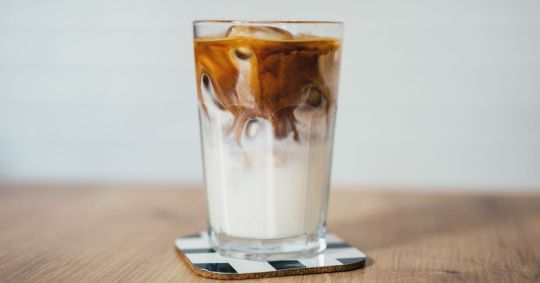
Iced Coffee: Iced coffee is a classic summer staple that's refreshing and easy to make. Brew your favorite coffee using your preferred method: cold brew, pour-over, or espresso. Once brewed, allow it to cool to room temperature before transferring it to a pitcher filled with ice cubes. Serve with a splash of milk or cream and sweeten to taste with simple syrup or flavored syrups. Garnish with a mint sprig or a cinnamon sprinkle for an extra flavor touch.

Cold Brew: Cold brew coffee, renowned for its smooth and mellow flavor, is surprisingly easy to make, even for beginners. To make a cold brew, coarsely grind your favorite coffee beans and steep them in cold water for 12 to 24 hours in the refrigerator. Once the brewing process is complete, strain the coffee grounds using a fine-mesh sieve or a coffee filter. Dilute the cold brew concentrate with water or milk to your desired strength and serve over ice. Customize it with flavored syrups or spices like vanilla, cinnamon, or cardamom for a unique twist.

Affogato: Affogato is a delightful Italian dessert that combines the richness of espresso with the creaminess of vanilla gelato or ice cream. To make an affogato, scoop a generous serving of vanilla gelato or ice cream into a bowl or glass. Pour a freshly brewed espresso over the gelato, allowing it to melt slightly and create a velvety coffee sauce. Garnish with a dusting of cocoa powder or a sprinkle of crushed espresso beans for an elegant finishing touch.

Frozen Coffee Frappé: Indulge in a frosty delight that will instantly transport you to a calm oasis. In a blender, combine cold brew or chilled espresso with milk, ice cubes, and a few tablespoons of sweetened condensed milk or sugar. Blend until smooth and creamy, adjusting the consistency by adding more ice or liquid as needed. Pour the frappé into glasses and top with whipped cream and a drizzle of chocolate or caramel sauce. For an extra indulgence, sprinkle crushed cookies or nuts on top for added texture. This is not just a drink; it's a sensory experience that will delight your taste buds and cool you down on a hot summer day.
Coffee Milkshake: Indulge your sweet tooth with a creamy coffee milkshake that will satisfy your cravings on a hot summer day. Combine cold brew or chilled coffee in a blender with vanilla ice cream, milk, and a drizzle of chocolate syrup or caramel sauce. Blend until smooth and frothy, adjusting the sweetness and thickness to your liking by adding more ice cream or milk as needed. Pour the milkshake into tall glasses and garnish with whipped cream and a cherry on top for a nostalgic twist.
With these refreshing coffee drinks in your repertoire, you can stay cool and caffeinated all summer long. Whether you're a fan of the bold kick of cold brew or the indulgent sweetness of a frappé, there's a cooling coffee concoction to suit every palate. So beat the heat and enjoy a delightful coffee creation that will not only help you stay refreshed but also keep you energized during even the hottest of days. Cheers to a cool and caffeinated summer!
0 notes
Text
Brazil Santos

As the largest coffee producer in the world, Brazil has an incredible range of coffees, producing conditions and lots to choose from, making it possible to have consistent, high-quality blends year after year. Brazil Santos is well known for its sweet and smooth profile, widespread appeal, medium body, and creamy, mellow flavor. Because it provides such a consistent profile, this coffee is an excellent base for any blend that will keep your customers returning time and time again for the same beloved flavors.
Most Brazilian coffee is grown on huge farms, built and equipped for mechanical harvesting and processing designed to maximize productivity. The relatively flat landscape across many of Brazil’s coffee regions, combined with high minimum wages, has led most farms to opt for this type of mechanical harvesting over selective hand-picking.
In the past, this mechanization meant that strip-picking was the norm. However, today’s mechanical harvesters are increasingly sensitive, meaning farms can selectively harvest only fully ripe cherries at each pass. This is excellent news for specialty-oriented producers.
In many cases and on less-level sections of farms, a mixed form of ‘manual mechanized’ harvesting may be used. The derricadeira – a mechanized rake that uses vibration to harvest ripe cherry - can selectively pick ripe cherry more quickly and cost-effectively than individual hand pickers. A tarp is spanned between coffee trees to capture the cherry as it falls.
With the aid of these newer, more selective technologies, a growing number of farms are increasingly concerned with – and able to deliver - cup quality.
After harvest, cherries are typically laid to dry in thin layers on patios. Under direct sunlight, they are carefully monitored and turned frequently.
0 notes
Text
Guatemala Huehuetenango
Huehuetenango is well-known for its high altitude and consistent weather patterns. The region lies at a nexus of hot air sweeping eastwards from the Plains of Tehuantepec in Oaxaca, Mexico, and cool air rushing down the Cuchumantanes Mountains. Meeting this hot and cold air creates a microclimate that keeps frost in check and enables coffee cultivation at higher altitudes. Coffee production at 2,000 meters above sea level here is typical. These conditions are perfect for producing the region's sparkling acidity and distinctive fruit flavors.

Due to its remoteness in one of Guatemala's three non-volcanic regions, most producers in Huehuetenango process their own coffee.
Farmers selectively hand-pick cherry and pulp it on their farms, using small hand-powered or electric drum pulpers. Parchment is then fermented in buckets or bags.
Following fermentation, parchment is agitated to remove the remaining mucilage and washed in clean water. All water used during pulping and washing is filtered—usually through earthen holes—so that the organic solids do not contaminate local waterways.
Farmers typically lay parchment to dry on raised beds stacked on each other to maximize space. Patios are also frequently used.
0 notes
Text
Brewing Community: The Vital Role of Coffee Shops in Neighborhood Building
In the hustle and bustle of modern life, where digital interactions often dominate, the significance of physical spaces for fostering community bonds cannot be overstated. Amidst this landscape, coffee shops are more than places to grab a caffeine fix; they serve as vibrant hubs where neighborhoods come alive with conversation, connection, and camaraderie. From freshly ground beans' welcoming aroma to soft chatter's comforting ambiance, coffee shops play a pivotal role in nurturing local communities.
A Gathering Place
Coffee shops are more than just venues to savor a cup of joe; they are gathering spots where individuals from diverse backgrounds converge. Whether it's students engrossed in their textbooks, professionals tapping away on laptops, or retirees catching up with old friends, coffee shops provide a neutral ground for people to come together. In an era where social isolation is becoming increasingly prevalent, these establishments offer a sense of belonging and camaraderie.
Cultural Exchange
One of the remarkable features of coffee shops is their ability to facilitate cultural exchange. As melting pots of ideas and perspectives, these spaces unite individuals from various walks of life, fostering an environment ripe for artistic dialogue and understanding. Whether through art displays, live performances, or simply striking up conversations with fellow patrons, coffee shops serve as platforms for celebrating diversity and broadening horizons.
Supporting Local Economies
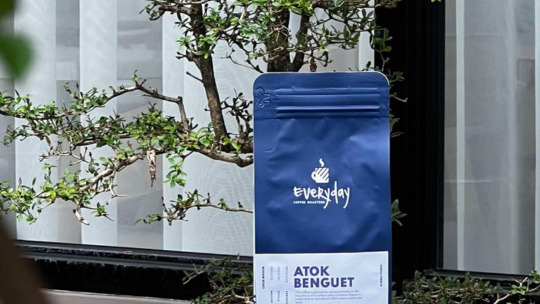
Beyond their social significance, coffee shops are crucial in supporting local economies. By sourcing beans from nearby roasters, employing local baristas, and often showcasing local artists or musicians, these establishments contribute to the economic vitality of their neighborhoods. Moreover, they serve as magnets for foot traffic, attracting visitors who may also patronize neighboring businesses, creating a ripple effect that stimulates the local economy.
Catalysts for Creativity
Creativity often thrives in the ambiance of a coffee shop. The gentle hum of conversation and the aroma of freshly brewed coffee create an atmosphere conducive to inspiration. Many writers, artists, and entrepreneurs find solace and stimulation within the walls of their neighborhood coffee shop, using it as a sanctuary to brainstorm ideas, collaborate with peers, or immerse themselves in their craft.
Building Social Capital
In community development, social capital—the networks of relationships among people who live and work in a particular society—plays a crucial role. Coffee shops are instrumental in fostering social capital by providing a space where individuals can forge meaningful connections and strengthen community ties. From impromptu meetups to organized events, these establishments serve as catalysts for building trust, reciprocity, and cooperation among residents.
Preserving Neighborhood Identity
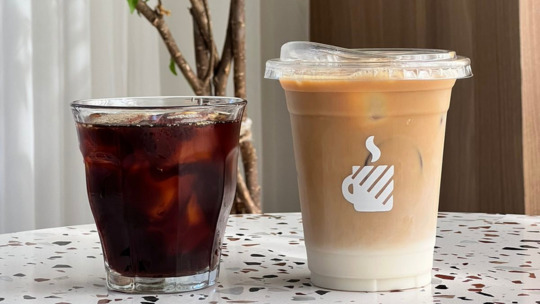
In an increasingly homogenized world, where chain stores and franchises dominate the urban landscape, locally-owned coffee shops offer a sense of authenticity and character deeply rooted in the neighborhood's identity. They serve as cultural landmarks, preserving their communities' unique flavors and stories. By patronizing these establishments, residents not only support local businesses but also contribute to keeping their neighborhood's distinctive charm.
Conclusion
In the tapestry of urban life, coffee shops emerge as vibrant threads that weave together the community fabric. Beyond their role as caffeine purveyors, these establishments serve as catalysts for social interaction, cultural exchange, and economic vitality. They provide a sanctuary where individuals can escape the rigors of daily life, connect with their neighbors, and contribute to the flourishing of their local communities. As we navigate an increasingly interconnected yet often isolated world, the importance of coffee shops in neighborhood buildings cannot be overstated—they are more than just places to sip coffee; they are the heartbeats of community life.
0 notes
Text
Panama Finca La Santa
Finca La Santa is a hidden gem Jose Manuel and Aileene Gallardo owned. The farm and its owners combine quality, passion, and dedication that translates into a fantastic coffee.
Finca La Santa is situated between 1100 and 1400 MASL in Jurutungo, Santa Clara, in the province of Chiriqui, nestled between a natural rainforest reserve on the one side and the border of Costa Rica on the other. The location and environment of the farm are challenging, with cold temperatures at night, lots of wind, and high rainfall. Even so, Jose manages to produce some incredible coffees. Or, as Jose says, it’s because of these conditions that while production and productivity are low, the result is a coffee with intense flavor. The cold wind and rain from the Atlantic through the mountains dividing Panama create La Santa’s special flavor notes.
The farm is based on a family tradition, which started when Jose’s father came to the region in the 60’s and started to plant coffee about 10 years ago. Jose and Aileene have divided the farm management into 5 micro-areas, all located in different microclimates. They process all the coffee on the farm, with the final preparation done in a more enormous mill.
The secret of the success of their coffee is a result of several factors all playing together in the right way. At the top of this list is Jose’s own dedication and his near obsession with growing and processing exceptional specialty coffee. He speaks passionately about the farm and coffee and is passionate about processing specialty coffee. He strongly believes in learning and improving techniques continuously in this area. Jose takes meticulous care of the plants and ensures only ripe cherries are picked during harvest. He constantly cups during the processing and separates lots by day and location to determine the micro lots that produce the best quality. Other essential factors in coffee are the selection of the seeds, the particular area of the coffee, and the microclimates.
0 notes
Text
5 Types of Coffee Drinkers You'll Encounter This Valentine's Day

As Valentine's Day approaches, cafes buzz with the sound of espresso machines, and the aroma of freshly brewed coffee fills the air. Amidst the romantic ambiance, you'll likely encounter a diverse range of coffee drinkers with unique preferences and personalities. Here are five types of coffee drinkers you might meet this Valentine's Day:
The Classic Romantic: This coffee drinker prefers the timeless elegance of a classic espresso or a velvety cappuccino. They appreciate the artistry of coffee-making and savor every sip as they reminisce about past Valentine's Day celebrations. You'll often find them lingering over their coffee, lost in thought, or engaged in intimate conversation with their loved ones.
The Adventurous Explorer: For the adventurous explorer, Valentine's Day is an opportunity to try something new and exciting. They're drawn to exotic blends and unconventional brewing methods like pour-over or cold brew. Their coffee order might include rare single-origin beans or bold espresso-based concoctions with unexpected flavor combinations. With each cup, they embark on a journey of discovery and delight.
The Indulgent Sweet Tooth: Valentine's Day is synonymous with indulgence; the sweet tooth coffee drinker fully embraces this sentiment. They crave decadent treats like mochas, caramel macchiatos, and flavored lattes topped with whipped cream and drizzled with syrup. For them, coffee is more than just a beverage—it's a dessert experience to be savored and enjoyed to the fullest.
The Health Conscious Connoisseur: While some may indulge in sugary coffee drinks, the health-conscious connoisseur takes a more mindful approach to their caffeine fix. They opt for alternatives like almond milk lattes, matcha green tea, or turmeric-infused coffee, prioritizing wellness without sacrificing taste. Their coffee order reflects their commitment to nourishing their body and soul, even on Valentine's Day.
The Solo Romantic: Not everyone celebrates Valentine's Day with a significant other, and the solo romantic embraces the opportunity to treat themselves to a unique coffee experience. Whether a perfectly brewed pour-over or a luxurious flat white, they relish the solitude and serenity of enjoying their favorite beverage alone. For them, coffee is a companion that never disappoints, offering comfort and contentment with every sip.
This Valentine's Day, whether you're sharing a romantic moment with a loved one or enjoying your own company, take a moment to appreciate the diverse world of coffee and its unique individuals. From the classic romantics to the health-conscious connoisseurs, there's a coffee drinker for every palate and preference. So raise a cup of love, friendship, and the simple pleasure of a great cup of coffee.
0 notes
Text
Why Single-Origin Coffee is so Expensive?
The coffee industry has recently witnessed a surge in popularity and appreciation for single-origin coffee. Enthusiasts often flock to cafes and specialty stores, willing to pay a premium for a coffee sourced from a specific region or even a single estate. But why exactly does single-origin coffee come with a hefty price tag? Let's delve into the factors contributing to this sought-after brew's expense.
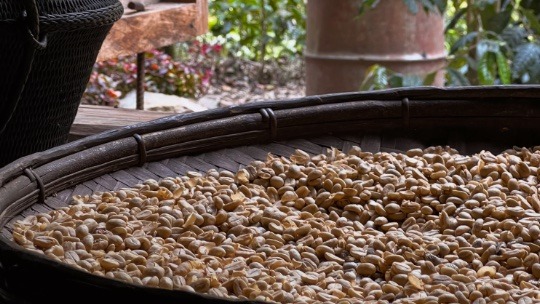
Limited Availability: Single-origin coffee is sourced from a specific geographic region, farm, or estate, which inherently limits its availability. Unlike blends, where beans from various locations are combined to achieve a consistent flavor profile, single-origin coffee represents the unique characteristics of a particular area's terroir. This exclusivity drives up the cost, requiring careful sourcing and often involving smaller-scale production.
Quality and Traceability: Single-origin coffee is prized for its distinct flavors, influenced by altitude, soil composition, and climate. To maintain quality and traceability, producers must adhere to meticulous farming practices, including selective harvesting and processing methods tailored to each batch of beans. This attention to detail ensures that the coffee maintains its unique flavor profile. Still, it also adds to the overall cost of production.
Direct Trade and Fair Compensation: Many producers of single-origin coffee prioritize direct trade relationships with farmers, bypassing traditional supply chains and ensuring fair compensation for their labor. While this ethical approach benefits farmers and promotes sustainability, it often increases consumer prices. Direct trade relationships involve greater transparency and investment in the livelihoods of coffee-growing communities. Still, they also necessitate higher prices to support these initiatives.
Quality Control and Roasting Expertise: Roasting plays a crucial role in unlocking the full potential of single-origin coffee beans. Roasters must carefully monitor variables such as temperature, duration, and airflow to highlight the unique characteristics of each batch. Achieving consistency and perfection requires expertise and precision, driving up the cost of production. Additionally, single-origin beans are often roasted in smaller batches to preserve their individuality, further adding to the expense.
Market Demand and Branding: The growing demand for specialty coffee and the allure of exotic origins and unique flavor profiles contribute to the premium pricing of single-origin coffee. As consumers become more discerning and educated about coffee, they are willing to pay higher prices for a superior product with a compelling story behind it. Furthermore, coffee roasters and retailers' branding and marketing strategies add perceived value to single-origin offerings, further justifying the elevated prices.
In conclusion, the allure of single-origin coffee lies in its exclusivity, quality, and distinct flavor profile, but these qualities come at a cost. Limited availability, quality control, ethical sourcing practices, and market demand all contribute to the higher price tag of single-origin coffee. Despite its expense, many coffee enthusiasts are willing to pay the premium for a truly exceptional and ethically sourced cup of coffee that reflects the unique characteristics of its origin.
0 notes
Text
Exploring Unique Coffee Bean Varieties: A Guide to Specialty Coffee Origins
In coffee connoisseurship, the journey from farm to cup is an intricate dance of flavors, aromas, and craftsmanship. Specialty coffee, with its diverse array of unique bean varieties, invites coffee enthusiasts on a sensory adventure. In this guide, we embark on a virtual tour of a specialty coffee roastery to delve into the fascinating world of coffee origins, exploring the roasting process, quality control measures, and the remarkable journey of coffee beans from the farm to the roastery to the eager hands of the consumer.
The Art of Sourcing: From Farms to Roastery
The first chapter in our exploration takes us to the coffee farms in the high altitudes of renowned coffee-growing regions. Specialty coffee is often sourced from single-origin farms, each with its own distinctive terroir, a term borrowed from the world of wine to describe the unique environmental factors that shape the flavor profile of the beans.
Imagine the sun-kissed slopes of Colombian coffee farms, where Arabica beans thrive in the perfect blend of altitude, climate, and soil. Picture the lush landscapes of Ethiopian coffee regions, where centuries-old heirloom varieties contribute to the rich tapestry of flavors. These are just glimpses of the diverse origins that contribute to the world of specialty coffee.
The meticulous selection of beans is a crucial step in the process, with roasters partnering directly with farmers to ensure ethical and sustainable practices. This promotes environmental responsibility and guarantees the highest quality beans for the roasting journey ahead.
The Roasting Symphony: Crafting Flavors in Every Bean
As we step into the heart of the roastery, the air is filled with the enticing aroma of freshly roasted coffee. The roasting process is an art carefully orchestrated to enhance the inherent flavors of each bean variety. Roasters employ a delicate balance of time and temperature to coax out the unique characteristics locked within the green coffee beans.
Specialty coffee roasters often use small-batch roasting methods, allowing for precise control. This approach ensures that each batch receives the attention it deserves, with the roaster acting as a maestro, coaxing symphonies of caramel, fruit, or floral notes from the beans.
The commitment to craftsmanship extends to the blending of different bean varieties. Roasters skillfully combine beans with complementary flavors to create unique blends, elevating the coffee-drinking experience to new heights. Like a well-composed piece of music, these blends harmonize individual notes to create a flavor profile that transcends the sum of its parts.
Quality Control Measures: A Commitment to Excellence
Quality control is the unsung hero of the specialty coffee world. From the moment the beans arrive at the roastery, they undergo rigorous inspections. This meticulous scrutiny ensures that only the finest beans make it to the roaster, guaranteeing a consistently exceptional cup of coffee.
Roasters consider factors such as bean size, moisture content, and defects. Additionally, cupping sessions—tastings akin to those found in wine—are conducted to evaluate flavor profiles and identify any potential imperfections. This commitment to quality extends beyond the roastery, as reputable roasters often maintain relationships with cafes and consumers, seeking feedback to refine and perfect their offerings continuously.
The Culmination: From Roastery to Your Mug
Our journey concludes with a moment of delight: the sip. The culmination of the intricate process, from the farm to the roastery, is the satisfaction experienced by the consumer. Whether you're savoring the nuanced notes of a Kenyan AA or the chocolatey richness of a Brazilian Bourbon, specialty coffee offers a spectrum of flavors that transcends the ordinary.
In the world of specialty coffee, each cup tells a story—one of dedication, craftsmanship, and a journey that spans continents. As consumers, we become not just coffee drinkers but participants in an art form that celebrates the unique diversity of coffee bean varieties. So, the next time you take a sip of that carefully brewed specialty coffee, remember that you're not just tasting a beverage; you're experiencing the culmination of a journey that begins on a distant farm and concludes in the comforting warmth of your favorite mug. Cheers to the artisans who turn humble coffee beans into an extraordinary sensory adventure.
0 notes
Text
Ethiopia Yirgacheffe Misty Valley
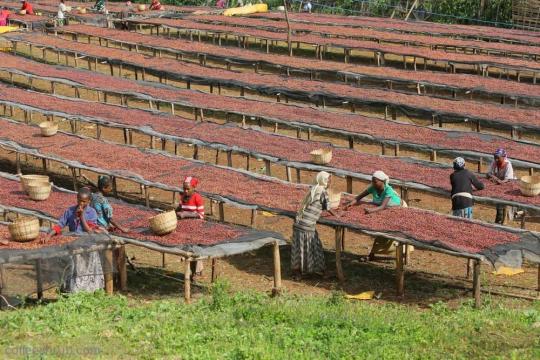
The washed coffees of Yirgacheffe have long been prized for their delicate, tea-like aromatics and clean citrus flavor. Recently, producers in the Gedio region have been reinventing the natural process originally developed in Ethiopia to offer a different profile from this well-known origin. The Misty Valley is a prime example of the fruitiness, complexity, and character of these Natural Yirgacheffe coffees.
When the ripe cherries are brought to the mill to dry on raised African beds, they are constantly turned (day and night!) for the first 48 hours of drying to ensure an even evaporation of the moisture from the cherry. This lends consistency and cleanliness to the cup, which can prove difficult in a process prone to mold and uneven air circulation. After the coffee is thoroughly dried and the skin, mucilage, and parchment removed, it is sorted and traded through the Ethiopian Coffee Exchange as a Grade 1 Yirgacheffe.
In the cup, the Misty Valley truly delivers. A perfumed floral aroma leads into a crisp and complex fruit basket flavor. The milky body provides the backbone for the fruit and aromatics, creating a harmonious balance. The cup finishes with a lingering, pleasant mouthfeel.
0 notes
Text
Rising Demand for Premium and Specialty Coffee at Home
In recent years, the landscape of coffee consumption has undergone a significant transformation. The once ubiquitous drip coffee and instant coffee culture have given way to a burgeoning market for premium and specialty coffee experiences, especially within the comfort of one's home. As consumers become more discerning about their coffee choices, a wave of enthusiasts is investing in high-quality beans, sophisticated brewing equipment, and a deeper understanding of the intricate world of coffee. This article explores the factors driving the rise of premium and specialty coffee at home and how this shift reshapes how we perceive and enjoy our daily cup of joe.

Shift in Consumer Preferences
The demand for premium and specialty coffee at home is partly a reflection of evolving consumer preferences. Modern coffee enthusiasts are unsatisfied with a caffeine fix; they seek a sensory experience beyond the conventional. This shift can be attributed to a growing appreciation for coffee beans' nuanced flavors, aromas, and origins. Consumers are more willing to explore diverse coffee profiles, including single-origin beans, artisanal roasts, and unique processing methods.
The Trend of Home Brewing
One of the driving forces behind the rise of premium and specialty coffee at home is the increasing popularity of home brewing. As people spend more time honing their culinary skills and seeking unique gastronomic experiences, coffee has become a natural extension of this trend. Home brewers are investing in high-quality coffee beans sourced from renowned regions worldwide, experimenting with various brewing methods, and embracing the artistry of crafting the perfect cup.

Technology's Role in Elevating the Home Coffee Experience
Advancements in coffee brewing technology have played a pivotal role in elevating the home coffee experience. From precision grinders to state-of-the-art espresso machines, technology has made it easier for enthusiasts to replicate the precision and quality achieved by professional baristas. Smart coffee makers and connected devices enhance the brewing process, allowing users to control parameters such as water temperature, extraction time, and coffee-to-water ratios precisely.
Emergence of Specialty Coffee Subscription Services
Another key driver of the home-coffee revolution is the proliferation of specialty coffee subscription services. These services directly deliver freshly roasted, high-quality beans to consumers' doorsteps, providing a convenient and curated coffee experience. By subscribing to these services, consumers access a rotating selection of beans, often sourced from different regions, each with its unique flavor profile. This model not only caters to the demand for convenience but also encourages consumers to explore a variety of coffee offerings.
The Rise of Coffee Education
An informed consumer is a powerful force, and the growing interest in premium and specialty coffee at home has spurred a parallel rise in coffee education. Enthusiasts are delving into the intricacies of coffee cultivation, processing, roasting, and brewing. Online platforms, workshops, and coffee events have become valuable resources for individuals eager to enhance their understanding of the beverage. As consumers become more knowledgeable, they develop a heightened appreciation for the craftsmanship of producing exceptional coffee.
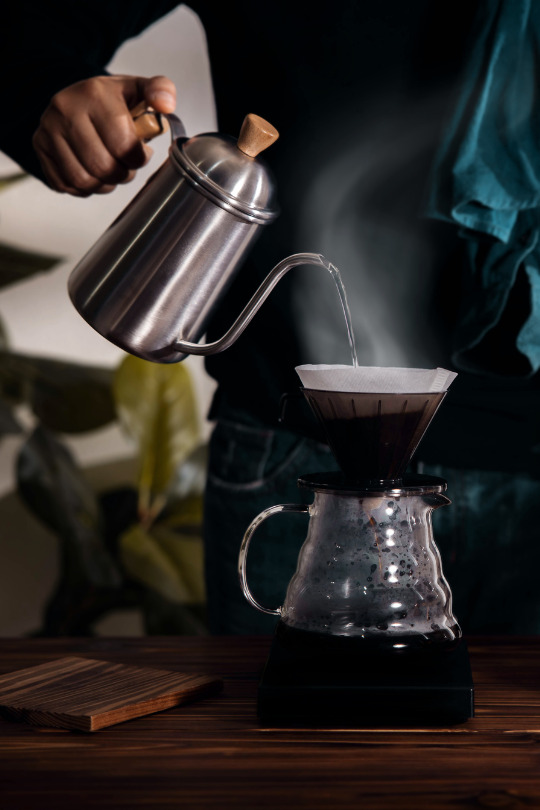
The Impact of Social Media
Social media platforms have amplified the visual and social aspects of coffee culture. Instagram, in particular, has become a haven for coffee enthusiasts to showcase their brewing setups, share aesthetically pleasing images of coffee creations, and connect with a global community of like-minded individuals. The visually driven nature of social media has fueled the desire for aesthetically pleasing, premium coffee experiences at home. It has created a virtual space where enthusiasts can exchange brewing tips, discover new beans, and celebrate the art of coffee.
The Ethical and Sustainable Coffee Movement
The shift towards premium and specialty coffee at home is about flavor and aesthetics and ethical and sustainable consumption. Consumers are increasingly conscious of their coffee choices' environmental and social impact. Specialty coffee often emphasizes fair trade practices, environmentally friendly cultivation methods, and support for local farmers. As consumers align their values with their purchasing decisions, the demand for ethically sourced and sustainably produced coffee continues to grow.
What's Next?
While the rise of premium and specialty coffee at home presents exciting opportunities for consumers and the coffee industry, it also poses specific challenges. Affordability remains a concern, as high-quality beans and sophisticated brewing equipment can be relatively expensive. Additionally, the learning curve associated with mastering various brewing techniques can be steep for newcomers to the specialty coffee scene.
However, these challenges are also avenues for growth and innovation. As the market expands, manufacturers are responding by developing more affordable yet high-quality coffee products. The democratization of specialty coffee is underway, focusing on making premium coffee experiences accessible to a broader audience.
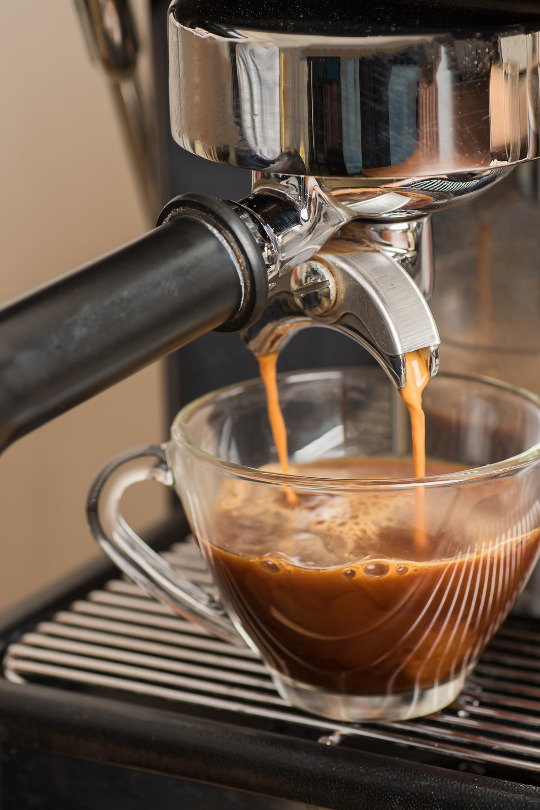
Will it Continue?
The growing premium and specialty coffee market at home reflects a cultural shift in how we perceive and enjoy our daily caffeine fix. It's not just about a quick energy boost anymore; it's about the experience, the craftsmanship, and the community surrounding the world of coffee. As consumers invest in better beans, advanced brewing equipment, and knowledge, the home has become a haven for coffee enthusiasts seeking the perfect cup.
The trajectory of this trend is poised to shape the future of the coffee industry, influencing how coffee is produced, marketed, and consumed. As the demand for premium and specialty coffee at home continues to rise, the industry will likely see increased innovation, accessibility, and sustainability, ensuring that the coffee culture becomes a diverse and inclusive space for all. So, whether you're a seasoned home barista or just starting your journey into the world of specialty coffee, the possibilities for discovery and enjoyment are boundless. Cheers to the ever-evolving art and science of brewing excellence at home!
Everyday Coffee Roasters is an e-commerce providing fresh-roasted coffee delivered right to your doorstep, conveniently and safely wherever you are in the Philippines. Discover the world's best coffee.
0 notes
Text
Located just south of Ethiopia, Kenya is well known for producing excellent cups of coffee primarily due to the excellent research and development of coffee and the country's highly educated farmers.
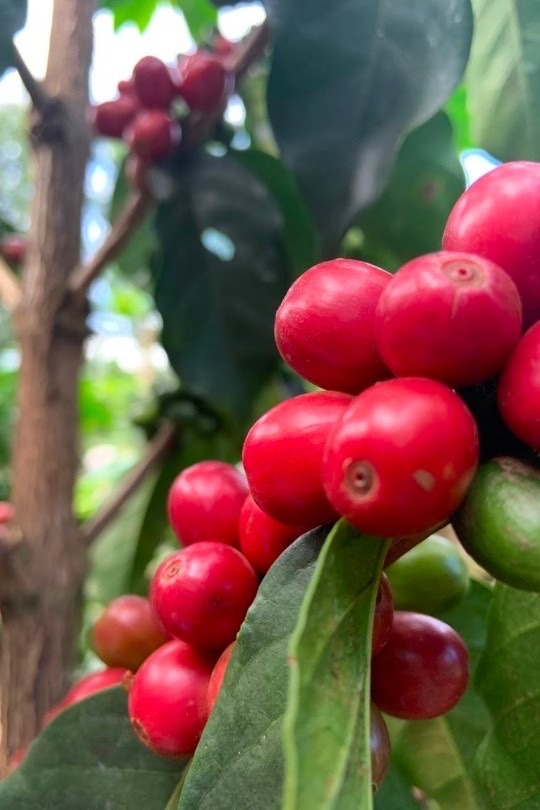
In Kenya, regardless of whether the lot is traceable, a grading system is being used for all its exported coffee based on the bean size, and some of you may have yet to come across terms such as AA, AB, and PB when looking at a bag of Kenyan coffee.
This coffee comes from the Central Region of Kenya, with rich volcanic soil in which it is grown and a high altitude of 1,700 - 2,000 meters above sea level, allowing the coffee to develop bold and complex flavors.
In this washed lot, you will get a floral aroma, with notes of berries and chocolate in the cup, with a nice body and an after-taste that lingers.
0 notes